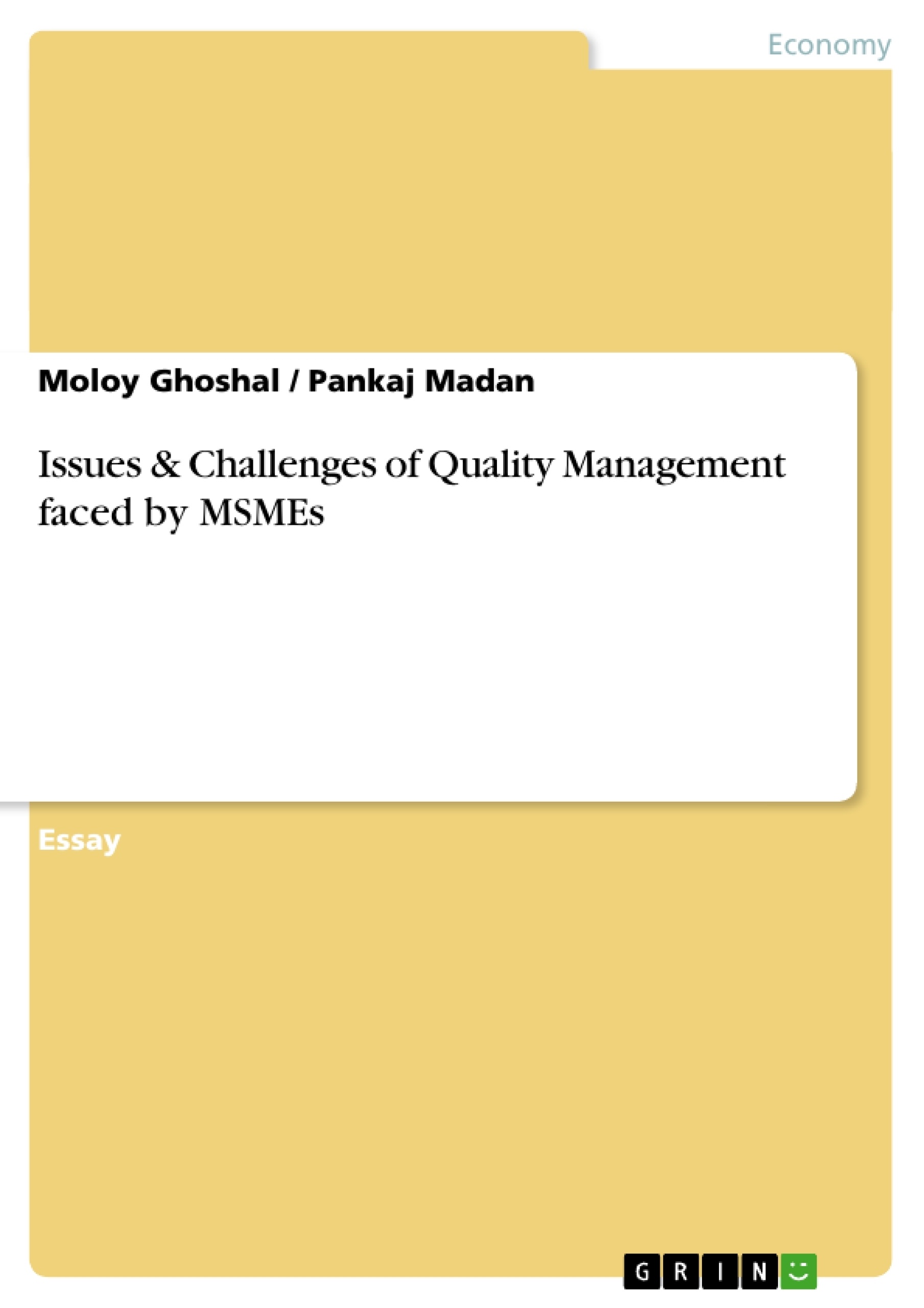With the increase in quality consciousness and expectations of the customers around
the world, Medium, Small and Micro Enterprises (MSMEs) in India are also trying to
keep-up with them by improving the quality of their products. This paper is an
assessment of quality practices, issues and challenges of MSMEs of Kanpur, India.
The focus of the study is to identify the quality readiness of these MSMEs, their
contribution to export, the strategic advantages and disadvantages faced by MSME in
export. A study was conducted on export oriented leather, plastics and chemical
industries of Uttar-Pradesh (India) which was presented at the end of the paper as a
case study so as to understand the current quality management practices of these
industries.
Inhaltsverzeichnis (Table of Contents)
- Introduction
- Importance of MSMEs
Zielsetzung und Themenschwerpunkte (Objectives and Key Themes)
This paper assesses quality practices, issues, and challenges faced by MSMEs in Kanpur, India. It aims to identify the quality readiness of these MSMEs, their contribution to export, and the strategic advantages and disadvantages they face in export markets.
- Quality management practices in Indian MSMEs
- Challenges faced by MSMEs in maintaining quality
- The role of MSMEs in India's economy
- The impact of globalisation on MSMEs
- Strategies for improving the competitiveness of MSMEs
Zusammenfassung der Kapitel (Chapter Summaries)
Introduction
This chapter defines MSMEs based on various international and Indian standards, highlighting the diverse definitions and classifications used globally. It establishes the context for understanding the size and scope of MSMEs, particularly in India.
Importance of MSMEs
This chapter emphasizes the crucial role of MSMEs in the Indian economy and globally. It highlights their significant contribution to employment, output, exports, and entrepreneurial development. The chapter uses statistics from India and other countries to underscore the sector's economic importance.
Schlüsselwörter (Keywords)
MSME, Quality Management, Export, India, Economic Development, Competitiveness, Small and Medium Enterprises, Globalisation.
- Citation du texte
- Prof. Moloy Ghoshal (Auteur), Dr. Pankaj Madan (Auteur), 2011, Issues & Challenges of Quality Management faced by MSMEs, Munich, GRIN Verlag, https://www.grin.com/document/183398



